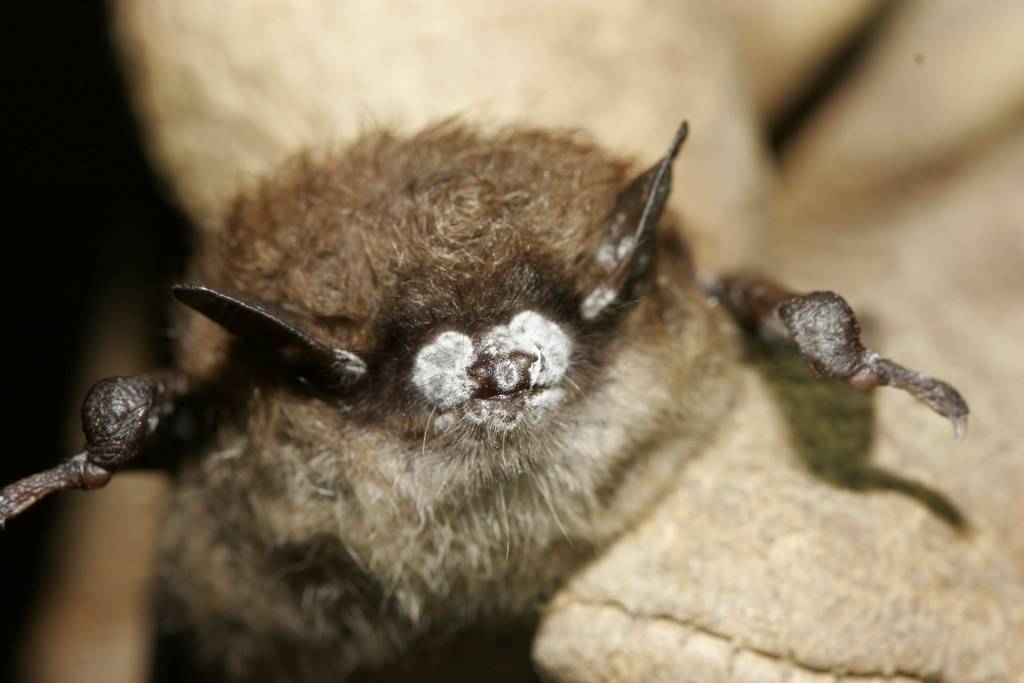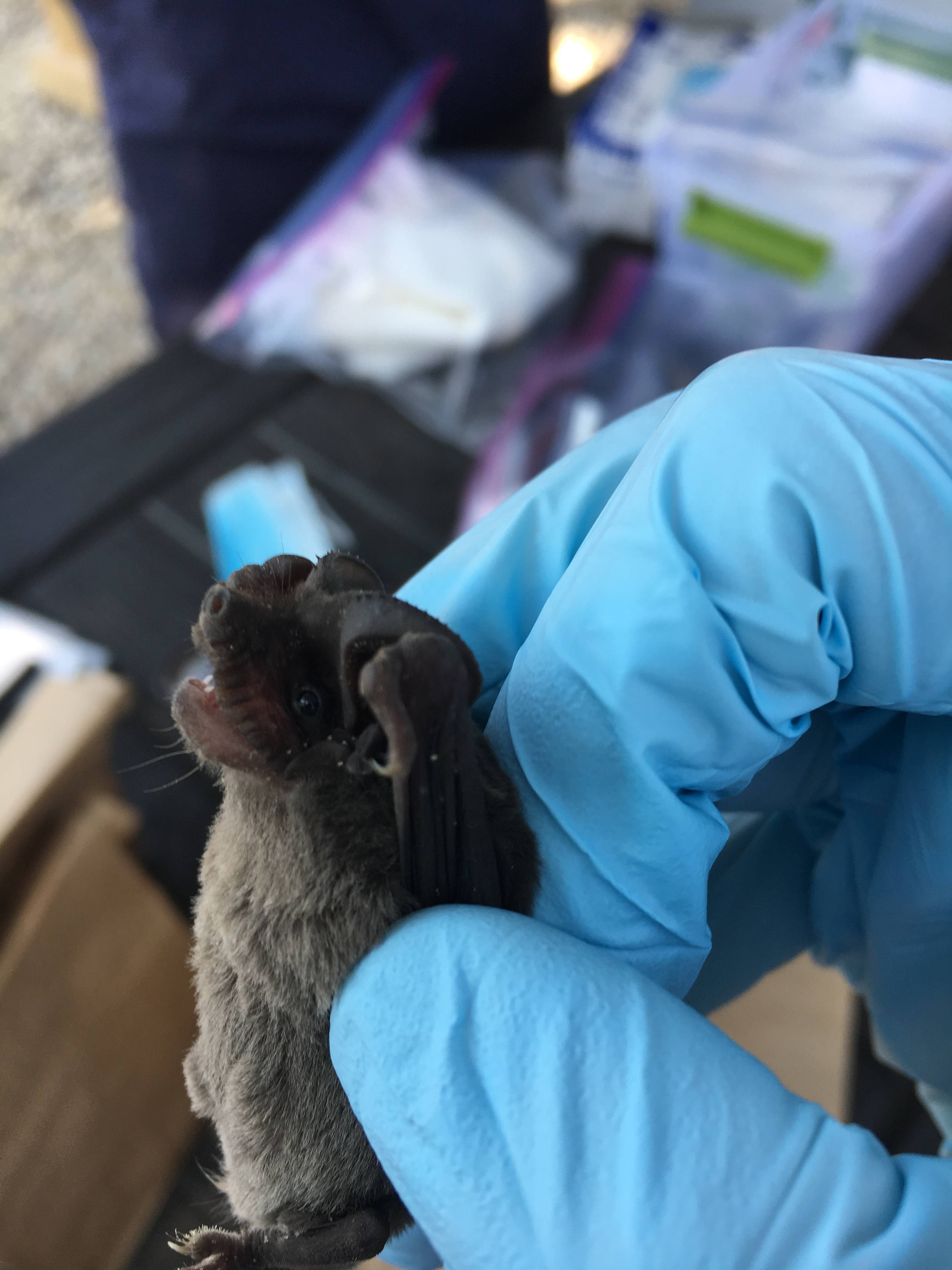Texas Parks & Wildlife taps Texas State team to research white-nose syndrome in bats
Jayme Blaschke | August 24, 2020


Texas State University has received a $500,000 grant from the Texas Parks and Wildlife Department (TPWD) to conduct an extensive acoustic survey of bats in Texas in order to prepare a response to the deadly white-nose syndrome that is devastating bat populations across North America.
The grant is among the largest TPWD has made to study non-game wildlife.
The Texas State team is comprised of principal investigator Sarah Fritts, assistant professor in the Department of Biology, Ivan Castro-Arellano, associate professor in the Department of Biology, and co-PI Sara Weaver, senior ecologist with Bowman Consulting who earned her doctorate in aquatic resources and integrative biology from Texas State in 2019. Fritts has been working with bats for more than 15 years and the team has extensive experience with researching wildlife populations, communities and diseases
“Some bat species in Texas, such as the well-known Mexican free-tailed bat that reside in bridges and caves around Central Texas, are known for their winter migrations. However, some individuals of this species hibernate here in Texas. Thus, it is unknown how susceptible Mexican free-tailed bats are to white-nose syndrome," Castro-Arellano said. "Also, many other species hibernate here as well such as the cave myotis, which had a die-off early this year due to white-nose syndrome. Other species that hibernate in Texas have been affected by the disease in other states, so as white-nose syndrome spreads throughout Texas, we expect many species to be affected."
The researchers will provide the Texas Parks and Wildlife Department with baseline occupancy, relative abundance and activity pattern estimates of bats across Texas year-round for a minimum of three years. The study will also identify local and landscape habitat and weather-related predictors of activity. That will enable the team to create models that can then be used to predict distribution and activity of priority bat species based on the influential local and landscape variables.
This will guide the agency as it prioritizes management and conservation strategies.
"Bats are a vital part of our ecosystem providing many services such as pollination, seed dispersal and pest control," Weaver said. "Here in Central Texas, bats aid farmers by eating the insects feeding on their crops and are estimated to save cotton farmers $74 per acre in pesticide use. Across the U.S., they contribute billions of dollars in savings in the form of pest control."
White-nose syndrome is a fungal disease responsible for die-offs in several bat species across North America. Losses greater than 90% have been documented in some hibernation roosts. The U.S. Fish and Wildlife Service estimates that more than six million bats have died from white-nose syndrome since it was first detected during the winter of 2006-2007. Since then, significant declines in the abundance of many bat species across the nation have been documented through summer bat surveys and hibernation counts. The fungus that causes white-nose syndrome, Pseudogymnoascus destructans (Pd), was detected in hibernating bats in Texas in early 2017.
"Infectious diseases are becoming a global problem not only for humans but also for wildlife conservation. The pathogen currently affecting bat populations is likely a consequence of human activities that inadvertently transported the pathogen from Europe to USA, with devastating effects on bats," Castro-Arellano said. "Moreover, this pathogen can likely affect humans given the ecosystem services that bats provide (e.g., insect pest reduction). Thus, it is imperative to generate baseline data to manage populations of these important species."
To prepare Texas for the impacts of white-nose syndrome, TPWD implemented a White-nose Syndrome Action Plan in February 2017. The first phase of the action plan is to determine Texas bat population parameters before white-nose syndrome exposure with the rationale of gathering population data to better understand the outcomes should the disease spread to Texas. However, the first die-offs from the disease in the state were documented in early 2020, adding urgency to the need to gather data to quantify the population-level effects.
Share this article
For more information, contact University Communications:Jayme Blaschke, 512-245-2555 Sandy Pantlik, 512-245-2922 |